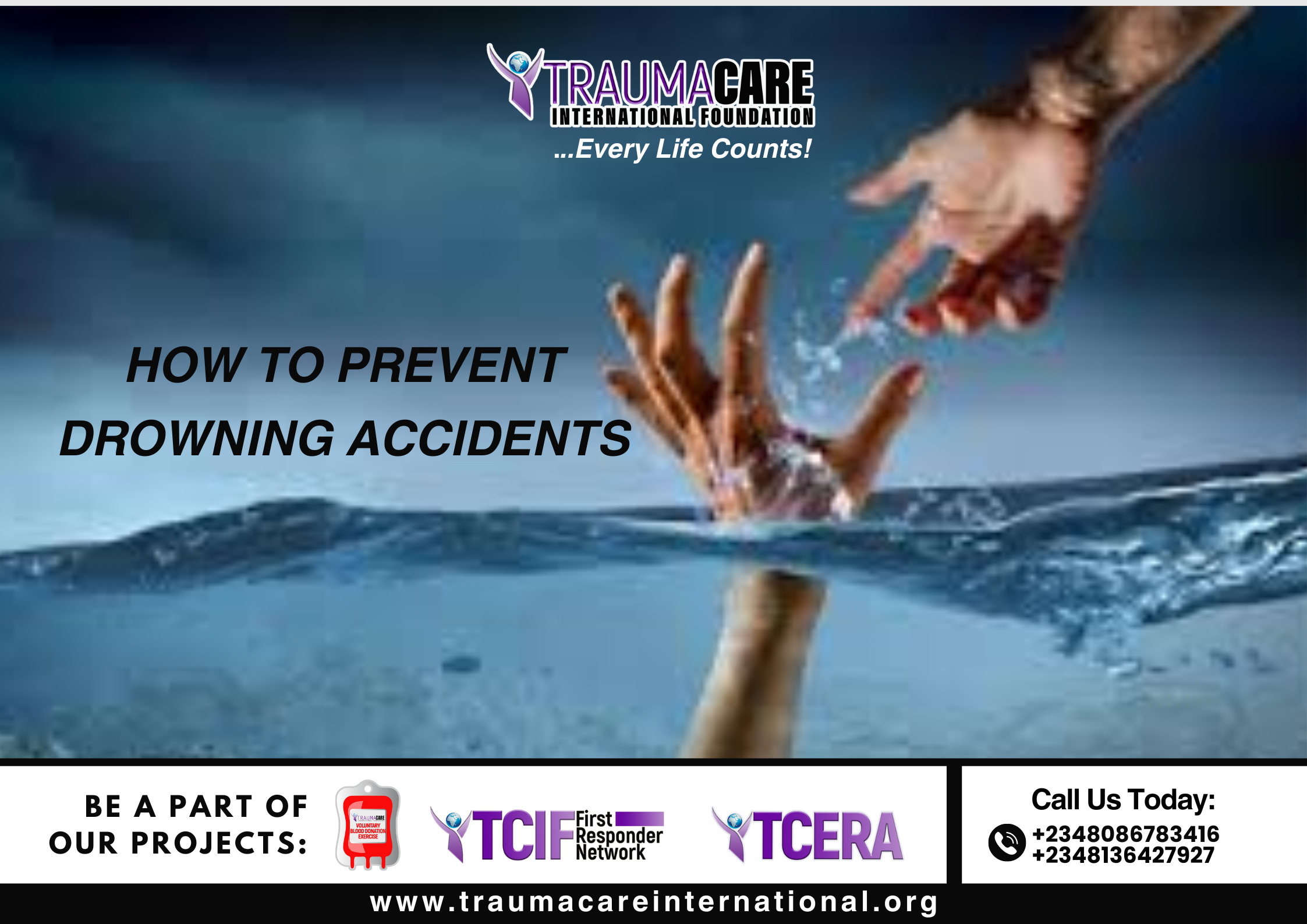Drowning accidents can be prevented by taking several important precautions. Here are some key steps you can take to help prevent drowning:
1. Learn to swim: One of the most effective ways to prevent drowning is to ensure that you and your family members learn to swim. Enroll in swimming lessons, particularly for young children, and make sure everyone has basic swimming skills.
2. Supervise children: Always supervise children around water, regardless of their swimming abilities. Keep young children within arm's reach and provide constant, vigilant supervision. Avoid distractions such as using your phone or engaging in other activities that may divert your attention.
3. Install barriers and fences: If you have a pool at home, install appropriate barriers such as fences, gates, or pool covers. These physical barriers can prevent unsupervised access to the pool and reduce the risk of drowning accidents.
4. Use life jackets and flotation devices: When boating, participating in water sports, or engaging in activities near bodies of water, ensure that you and your family members wear properly fitting life jackets or other approved flotation devices. This is particularly important for individuals who are not strong swimmers.
5. Be cautious around natural water bodies: Exercise caution when swimming in lakes, rivers, or the ocean. These natural water bodies can have strong currents, hidden obstacles, or sudden changes in depth. Always be aware of potential hazards and swim in designated areas with lifeguards when available.
6. Educate yourself on water safety: Stay informed about water safety practices and educate yourself on the risks associated with different water activities. Understand the signs of drowning and know how to respond in case of an emergency. Consider taking a CPR (Cardiopulmonary Resuscitation) and first aid course to be prepared to provide immediate assistance if needed.
7. Avoid alcohol and drugs: Never consume alcohol or use drugs while swimming, boating, or supervising others in water. These substances impair judgment, coordination, and reaction time, increasing the risk of accidents and drowning.
8. Be aware of weather conditions: Pay attention to weather forecasts and avoid swimming or boating during storms, strong currents, or adverse weather conditions. Inclement weather can pose significant risks in the water.
9. Encourage water safety in public places: Support and promote water safety measures in public places such as community pools, beaches, and recreational areas. Advocate for the presence of lifeguards, clear safety guidelines, and proper maintenance of facilities.
10. Teach water safety: Educate children and adults about water safety rules and practices. Teach them to respect water, understand the dangers associated with it, and follow safety guidelines. Encourage open communication about water safety within your family and community.
11. Buddy system: Establish a buddy system whenever you or your loved ones are near water. Always swim or participate in water activities with a companion, particularly in unfamiliar or potentially hazardous environments. This way, you can look out for each other and provide assistance if needed.
12. Learn rescue techniques: Consider learning basic rescue techniques, such as reaching or throwing assists, to help someone in distress without putting yourself at risk. These skills can be valuable in emergency situations and may make a crucial difference in preventing drowning accidents.
13. Be cautious with inflatable toys: While inflatable toys and rafts can be fun, they should not be relied upon as safety devices. They can easily deflate, overturn, or drift away, posing a risk to swimmers. Use them with caution, and always prioritize the use of approved life jackets or personal flotation devices.
14. Secure backyard pools: If you have a backyard pool, take additional safety measures. Install pool alarms that can alert you when someone enters the water unexpectedly. Secure doors and gates leading to the pool area with locks or latches that are out of reach of young children. Consider using pool safety covers when the pool is not in use.
15. Be mindful of hot tubs and spas: Hot tubs and spas can present their own set of risks. Keep the temperature at a safe level to avoid heat-related illnesses or exhaustion. Ensure that young children are supervised near hot tubs and cannot access them without adult supervision.
16. Learn about local water conditions: If you plan to swim or engage in water activities in natural bodies of water, such as lakes or rivers, familiarize yourself with the specific conditions of the area. Learn about currents, tides, or any other factors that may affect water safety. Observe warning signs and advisories provided by authorities.
17. Promote swimming skills for all: Encourage individuals of all ages to learn swimming skills. This includes adults who may not have had the opportunity to learn earlier in life. Many communities offer swimming lessons and programs for adults, ensuring that everyone has the ability to enjoy water activities safely.
18. Regular maintenance and inspection: If you own a pool, ensure that it is properly maintained and inspected regularly. Check for any potential hazards, such as broken drains or loose tiles, and address them promptly. Adequate maintenance helps mitigate risks and ensures a safer swimming environment.
Remember, prevention and preparedness are key to reducing drowning accidents. By implementing these measures, remaining vigilant, and prioritizing water safety, you can help protect yourself, your loved ones, and others from the dangers of drowning.Remember, these are general guidelines, and it's important to follow any specific safety recommendations provided by local authorities or relevant organizations in your area.
For more information;
Call: +234808 678 3416 or +2348136427927
[email protected] CLICK HERE TO SIGN UP
Download the TCERA user app today.
https://bit.ly/tceraAndroid
https://bit.ly/tcera-IOS





What do you think?
0 Responses
To Comment, you must Sign In
Be the First to Post on this Topic